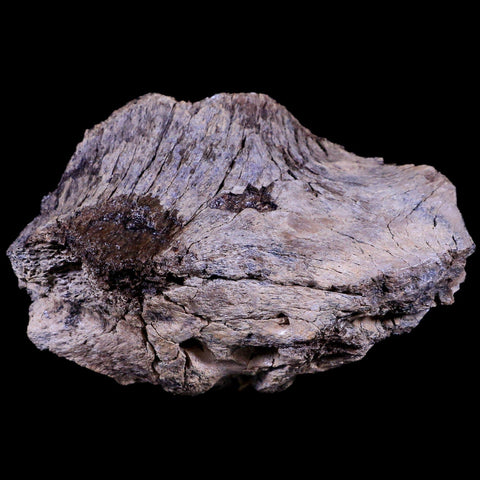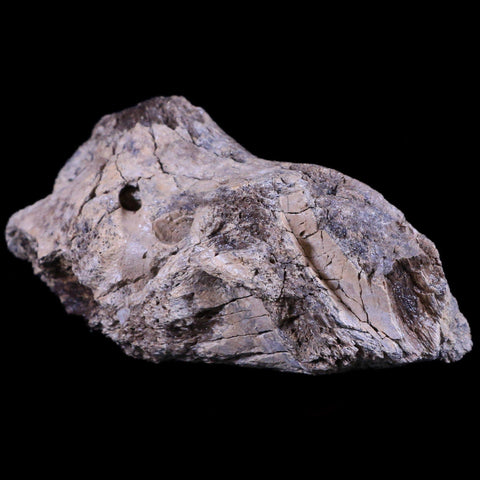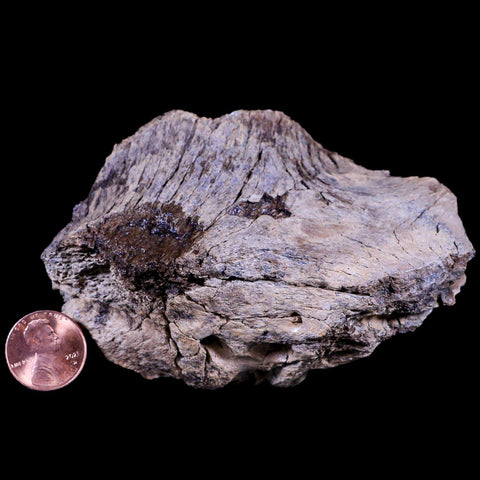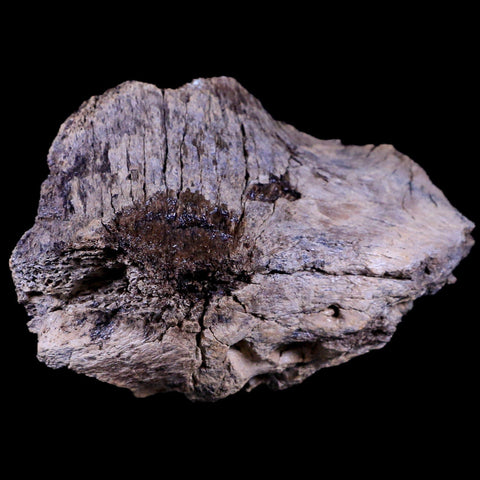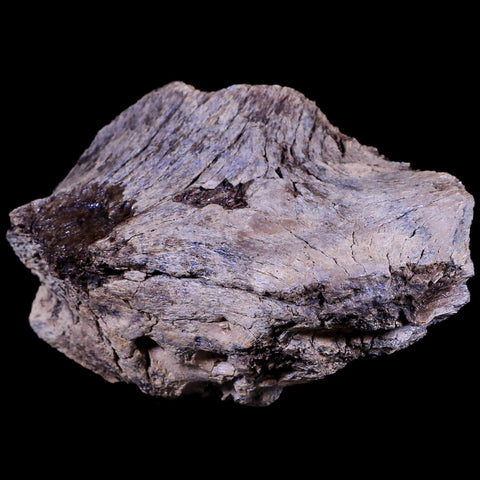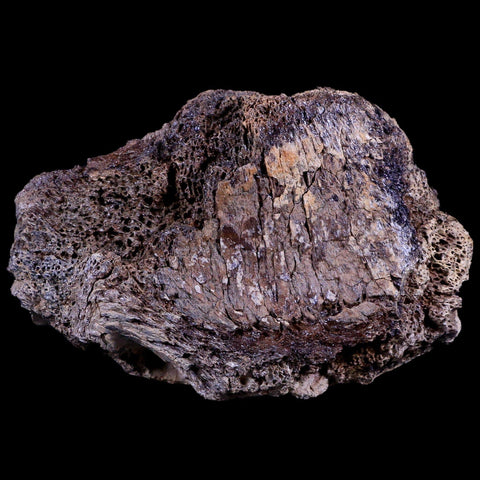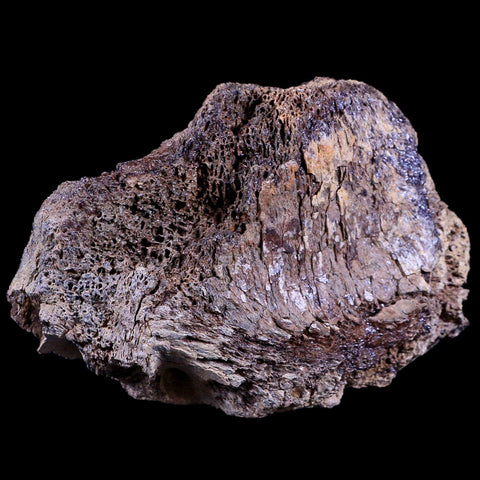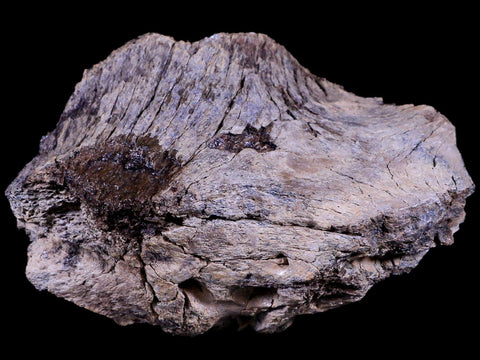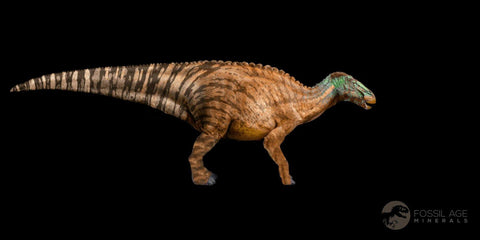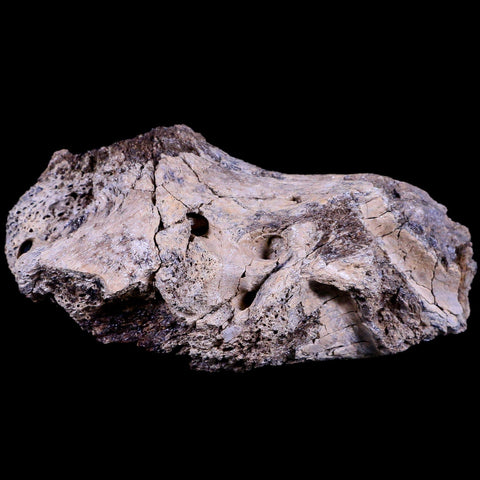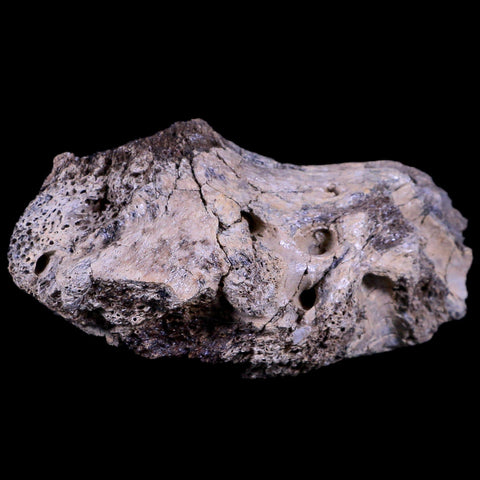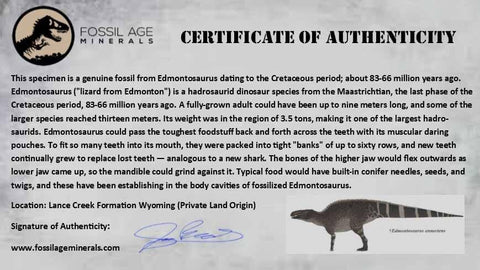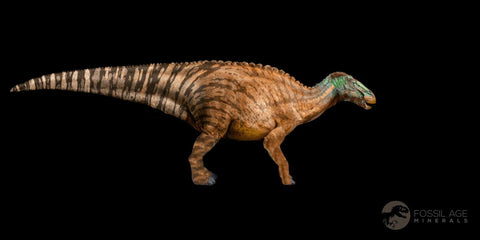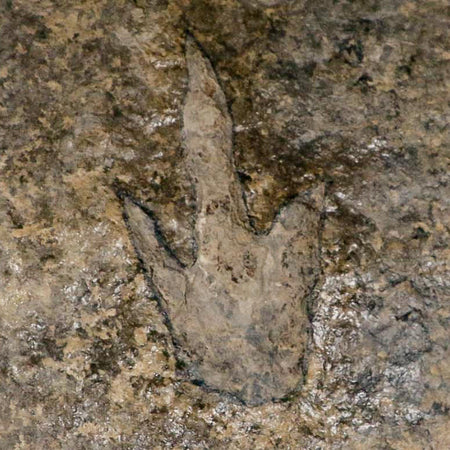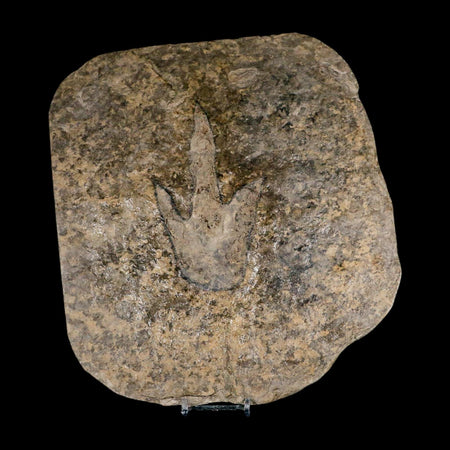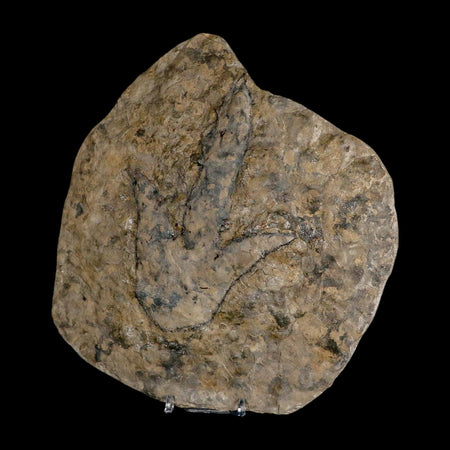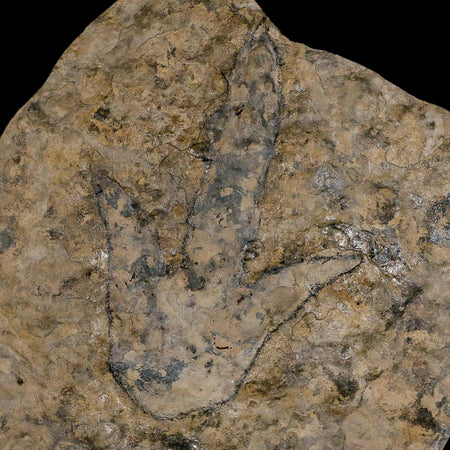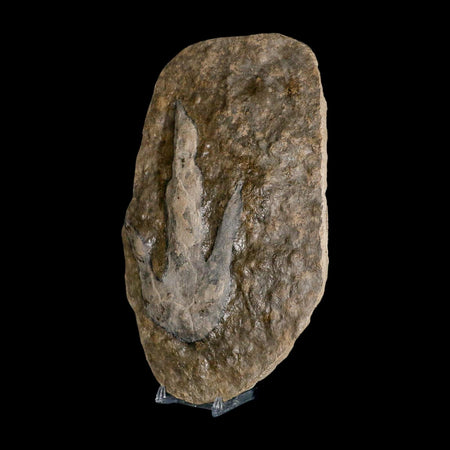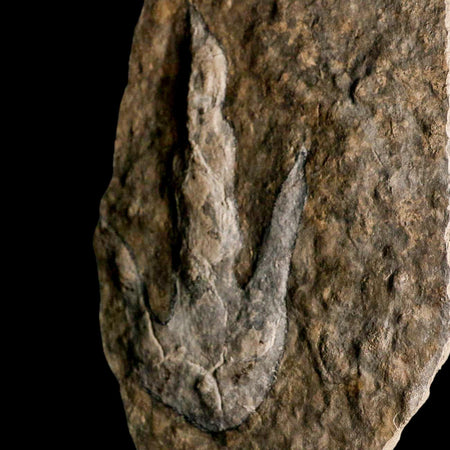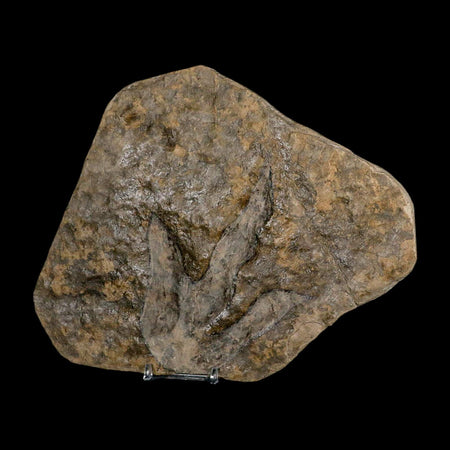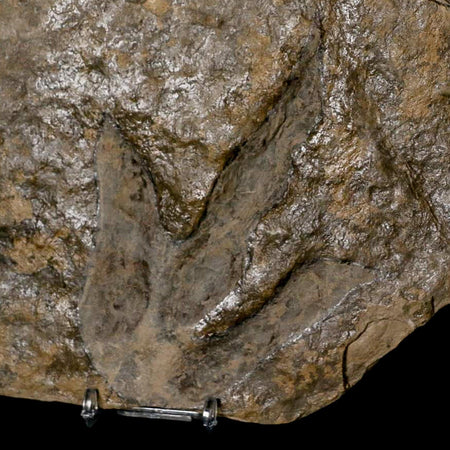4" Edmontosaurus Dinosaur Fossil Brian Case Bone Section Lance Creek WY COA
Location: Lance Creek Formation, Weston County, Wyoming (Private Land Origin)
Weight: 9.3 Ounces
Dimensions: 4 Inches Long, 2.6 Inches Wide, 2 Inches Thick
Comes with a Certificate of Authenticity.
The item pictured is the one you will receive.
This is a genuine fossil.
Edmontosaurus ("lizard from Edmonton") is a hadrosaurid dinosaur species from the Maastrichtian, the last phase of the Cretaceous period, 71-65 million years ago. A fully-grown adult could have been up to nine meters long, and some of the larger species reached thirteen meters. Its weight was in the region of 3.5 tonnes, making it one of the largest hadrosaurids.
Edmontosaurus was capable of moving the toughest vegetation across its teeth using robust, flexible cheek pouches. Its mouth contained tightly packed rows of teeth—up to sixty at a time—with continuous replacement similar to that of sharks. The upper jaw bones flexed outward when the lower jaw rose, enabling a grinding motion. Fossilized remains reveal its diet included conifer needles, seeds, and twigs, confirming its role as a tree-browser. Notably, the 1908 Wyoming find preserved fossilized skin impressions, showing scaly, leathery skin and thigh muscles beneath, creating the impression that the leg extended from the knee under the skin. This anatomy enhances its duck-like appearance, further marked by characteristic tubercles along its neck, back, and tail.
Edmontosaurus was bipedal but could surely have walked on four legs. The forelimbs are shorter than the hindlimbs, but not so much that four-legged motivation was unfeasible. The front feet also had hooves on two fingers, and weight-bearing pads like folks of Camarasaurus. The rear feet had two toes, and all were hooked. The bone arrangement in the lower limbs suggests that both the legs and feet were attached to very influential muscles. The spine curved downwards at the shoulders, so Edmontosaurus would have had a low posture and would have browsed close to the ground. Despite the power of its limbs, Edmontosaurus would only have been slow-moving and had few defensive features. To survive, it must have had keen eyesight, hearing, and smell to get an early warning of predators.



